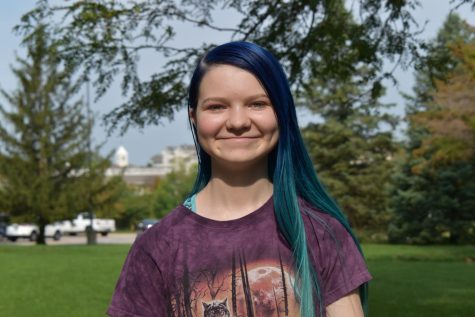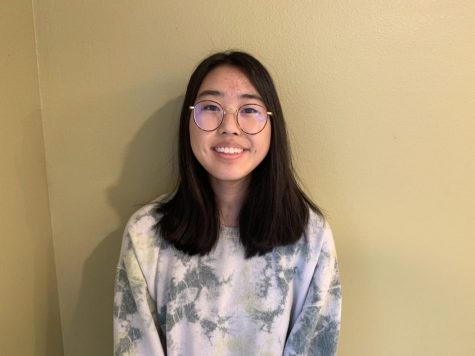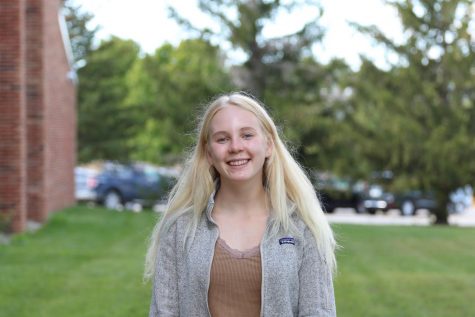Achieving success in biliteracy
At the start of the 2019-2020 school year, West High introduced their first Seal of Biliteracy course.
Most schedules at school have a strict structure: go to class, do the homework, repeat. But the new Seal of Biliteracy classes are set up differently. Instead of following a set curriculum, they spend class translating documents, doing community service and tutoring.
Each day looks very different for each students. For French student Martina Schianchi ’20, she spends three days out of the week working with English as an additional language (EAL) students.
“My favorite part of the class is working with the EAL students because I get to use my French more often than I would in class, so I get to practice my French,” Schianchi said. “At first, it was really hard because the words that they use in class are not the words that we use in class … Now it’s really rewarding to see how it’s easier for them to understand with our help. It’s nice to know that we’re helping them understand English a little better.”
The other two days she works on different activities such as translating flyers for certain organizations.
The class is designed for students to achieve their Seal of Biliteracy, an award that recognizes students for their proficiency in speaking two or more languages in high school. The seal was created by an organization known as Californians Together in 2008. Iowa implemented the Seal of Biliteracy on April 17, 2018, and West High started the program in the fall of 2019.
The Seal of Biliteracy helps students get jobs involving the languages that they speak, and encourages them to learn their languages fluently. Spanish teacher Dave Rosenthal and French teacher Theresa Juhl teach Spanish V and French V respectively, where students work to achieve their Seal of Biliteracy. Juhl also works with students who speak other languages to help them achieve their seal.
“I really like the class right now,” said Alex Filerio ’21 who takes Spanish V. “The teacher [Dave Rosenthal] is really nice … I get to learn more about the community that speaks Spanish and help the community.”
If students are fluent in more than two languages, they can add an additional language to their Seal of Biliteracy, although they have to complete all of the requirements for each language they speak.
There are four main requirements for achieving the Seal of Biliteracy: complete a proficiency exam in both languages, complete 50 hours of community service, at least 10 hours in each language, create a portfolio and give a presentation.
There are a lot of options for the proficiency exams in both languages. For English, students can use a variety of different scores from tests such as the ISASP or SAT and ACT. For their target language, students can use the AP Language exam, or, if they didn’t take or pass the exam, West students can take an exam from the American Council on the Teaching of Foreign Languages called the ACTFL Assessment of Performance Towards Proficiency in Languages, or the AAPPL.
“The AAPPL aligns with our current French and Spanish programs in AP,” Juhl said. “The standards that were created for our programs are created by the same organization that is issuing the AAPPL exam. It’s also the same exam that our ELL teachers are using.”
West High works with multiple organizations including Center for Worker Justice, Neighborhood Centers of Johnson County, IC Compassion, North Liberty Community Pantry and Parks and Recreation Department to get the students the community service hours they need. Next year, they plan to volunteer with the elementary schools as well.
“Certain tutoring happens at the Center for Worker Justice and the Neighborhood Centers and at North Liberty Community pantry. There’s been different events for that and the Parks and Rec department. There’s also some tutoring there on Saturdays and different events for that too,” Juhl said.
“We do translation as well as tutoring and promoting different things since the goal in most of these organizations is to serve a wider population,” Juhl said. “We started the year with meeting the organizations and they were very generous in saying ‘here’s what we need, can you come help us.”
Juhl and Rosenthal plan to finish up everything for the Seal of Biliteracy by April 15 so that their students can have around two weeks to put together their portfolios and presentations. The portfolios showcase nine 21st century skills that the schools selected for the students to create a piece of work or use within their work. Some of these skills include communication and problem-solving.
Filerio feels like the 21st-century skills have helped her be more prepared in the coming years because it has expanded on her ability to interact with people.
The presentations put all of the work they’ve done throughout the year into one place to demonstrate their biliteracy. The presentations will be given to certain groups of teachers this year; however, Juhl plans on having it on a bigger scale for next year.
“We initially hoped to have a panel of teachers and community members, some of whom spoke the language and some of whom didn’t so that the presentation can be truly bilingual,” Juhl said. “It’s not going to be quite as big as we wanted to do for this first time through which is probably even better because that way we can have more direct feedback on how we want to do it next year.”
The students are told the requirements at the beginning of the year, and then they work with their teacher to make sure they complete them individually and to help with logistics.
French V and Spanish V tend to have mostly seniors in their classes, as most students take their first language class in 8th grade. However, some students, such as Filerio who is a freshman, take the class much earlier. This leaves her with a few options for the next coming years.
“[Next year] I can go to University and take classes or I could do AP Spanish and learn more about the language and then go to the University the year after,” Filerio said.
While the French V and Spanish V classes this year are quite small, next year even more students plan to take the class.
“As this grows and becomes more popular our biggest hope is that it helps kids get a job, it’ll help them get some University credit, it would help them step into something that they didn’t have an opportunity to do because they’d have documentation that they’re skilled,” Juhl said.
Your donation will support the student journalists of West High School. Your contribution will allow us to purchase Scholarship Yearbooks, newsroom equipment and cover our annual website hosting costs.

(she/her) Bess Frerichs is the online managing and feature editor. As a senior, this is her third and final year on staff. She enjoys reading, writing...

(she/her) Helelia is a senior war at West and has been on staff for 3 years. She is the social media editor of all WSS accounts. She enjoys golfing and...
Sofia Wells-Lu is a sophomore at West High and this is her first year on staff. She is a photographer for the yearbook and enjoys reading books and listening...

Nao Oya is a photographer at West High and in her free time she likes to bake and play in the rain.

(she/her) Zoe Scott is a junior at West. Zoe is the Trojan Epic sports editor, and this is her second year working for the yearbook. She enjoys swimming,...


